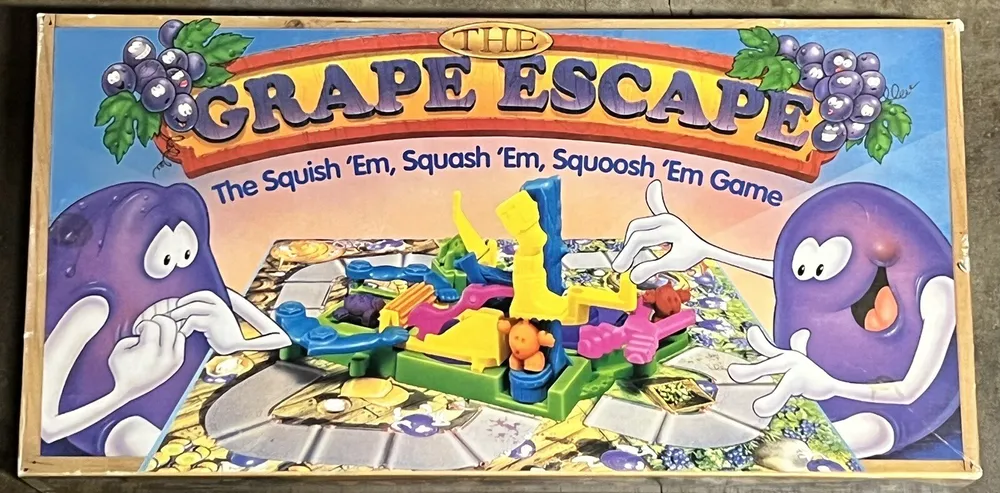The Grape Game (2007)
The Grape Escape
The Grape Escape is a board game released in 1992 by Parker Brothers (now Hasbro) and licensed by Rehtmeyer Inc. The game was intended to entertain younger children and consisted of playing pieces constructed of various colored Grape Goop (Play-Doh) that were fashioned after grape-like action figures. The game play consisted of maneuvering clay playing pieces through several plastic obstacles on a board that were aimed to physically disfigure or decapitate the playing piece. Destroying the Grape Goop figure often resulted in losing the game, but sometimes resulted in the affected player re-molding their Grape Goop figure using one of the included grape mold templates and returning to the start space.
Why is The Grape Escape Popular?
The Grape Escape is popular for its unique Gameplay Mechanics of The Grape Escape and the use of Play-Doh as a game component. The game is significant for its contribution to the board game industry and its appeal to younger children.
Game Components of The Grape Game
How To Setup The Grape Game
To set up the game, each player takes on the role of a vineyard manager. The game board is laid out, and each player prepares for the tasks involved in a year of viticulture, starting from winter pruning to grape harvesting. Players receive the necessary tokens and cards to manage their vineyard operations.
Gameplay Mechanics and Game Objective
Gameplay Mechanics
Game Objective
Player Experience
Players immerse themselves in the world of viticulture, managing the intricacies of running a vineyard. The game requires strategic planning, risk management, and careful resource allocation. The dynamic nature of the game, with its various challenges and unpredictable events, keeps players engaged and challenged.
Pros
Cons
Personal Thoughts on The Grape Game
The Grape Game is ideal for those who enjoy strategy and resource management games. It is particularly suited for families or groups looking for a game that combines education with fun. The game’s complexity makes it more appealing to older children and adults who can fully appreciate the nuances of managing a vineyard. However, it may not be the best fit for very young children due to its intricate mechanics.
We are supported by our audience. When you purchase through links on our site, we may earn an affiliate commission, at no extra cost for you. Learn more.

